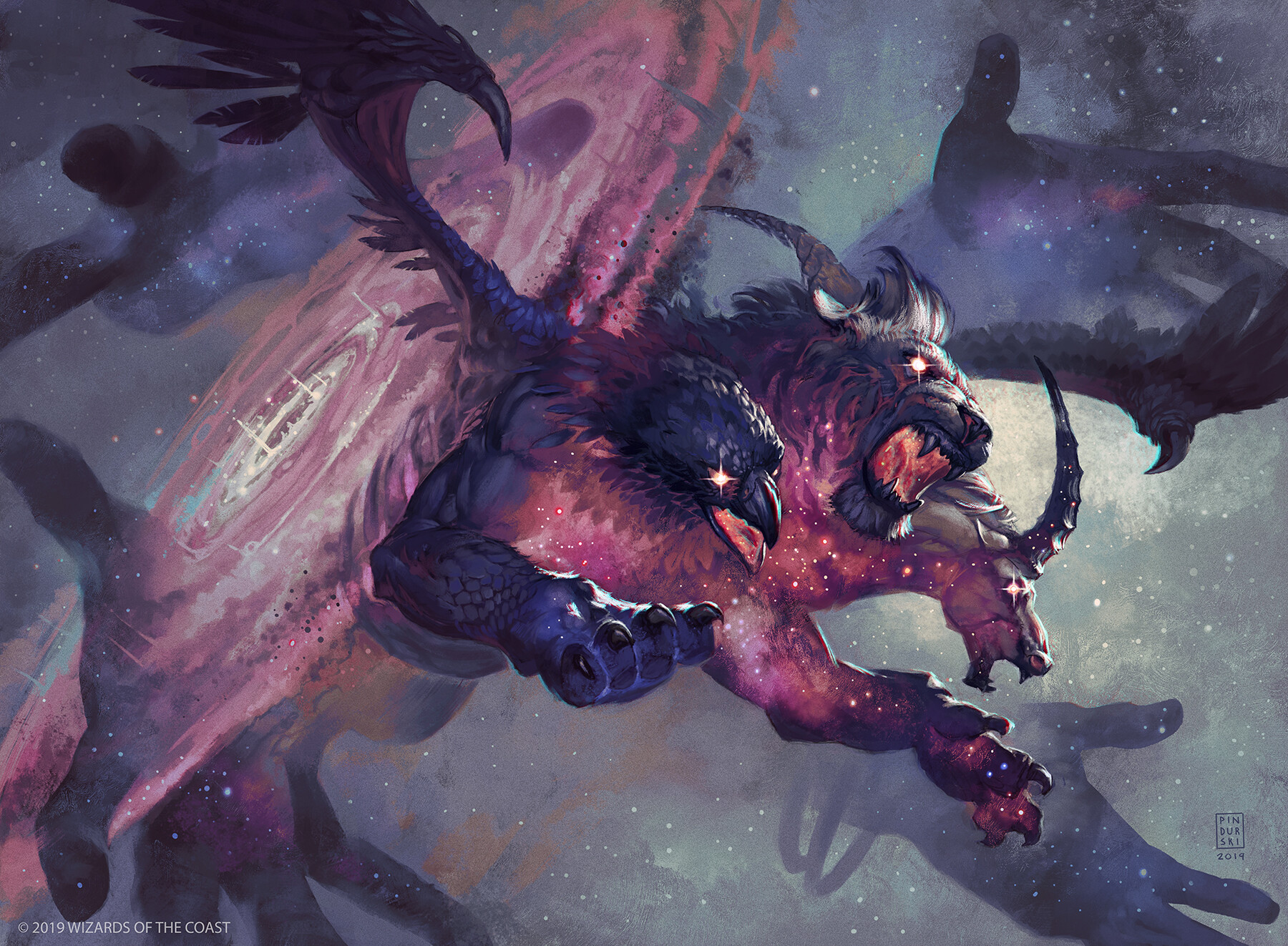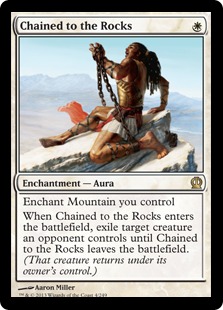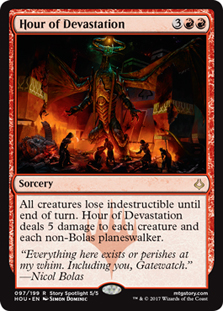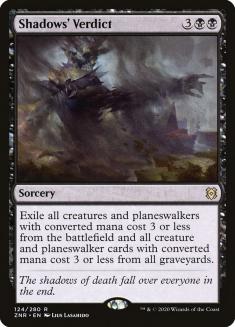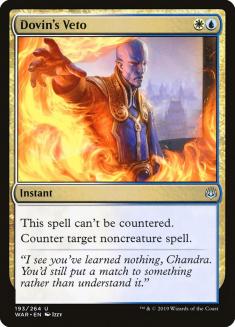Sometimes you just need a little inspiration.
While reading through last week’s Pioneer What We’d Play I noticed something. Five-Color Niv-Mizzet has been one of the premier Pioneer decks for sometime now, and even with the bannings of Teferi, Time Raveler and Uro, Titan of Nature’s Wrath, there are still plenty of reasons to play the deck between its high power, toolbox nature, and the ability to generate a slew of card advantage. Bring to Light can function in every role by nature as a tutor for ways to catch up or pull extremely far ahead.
In parallel, Dom Harvey, Sam Black, and others have been advocating Enigmatic Incarnation in just about every legal format, and as the clearly complicated deckbuilding puzzle starts to become solved, the deck is picking up in popularity and quickly earning results.
When two five-color decks get posted in an article next to each other, it starts to become a lot easier to visualize how they can begin to hybridize into a sum of their parts. Dom did a great job of summarizing the strengths of Five-Color Enigmatic Incarnation in that What We’d Play but I’ll start to illuminate the thought process behind why they immediately jumped out to me as a clear force to be combined.
- Both decks are five colors. Easy enough.
- Both decks utilize a collection of tutors and a toolbox to solve problems. There’s a lot of appeal in going on the quest to get both decks to support each other if they can blend seamlessly.
- Enigmatic Incarnation as currently built is a Yorion deck, thus there’s more room to hybridize your decks from traditional Niv-Mizzet (which has also been built as a Yorion deck at various points in the past).
- One of Niv-Mizzet’s “sketchier” aspects, its mana, is “solved” by the support cards that make up Incarnation’s core engine — mana fixing like Nylea’s Presence and Path to the World Tree.
- Incarnation already wants to play several gold cards, which can begin to naturally blend the overlap.
- At its essence, the Bring to Light core is relatively small. Of course Niv-Mizzet is doing a lot of heavy lifting, and you want to maximize it as best as you possibly can with gold cards, but adding a sweeper, Bring to Light, and a Valki to your deck is a relatively low cost when you’re already five colors.
So it looked achievable, but what are the pros of hybridizing these two strategies?
It’s pretty simple. Adding more engines to Five-Color Niv-Mizzet gives you a higher percentage of draws where you can get off the ground faster and begin generating advantage before Turn 4 or 5 with the deck’s namesake or Bring to Light. While the deck is excellent at generating cards and tossing them at your opponent until they lose, they’re still reliant on Niv-Mizzet Reborn (especially with Uro gone) to generate the raw cards they need to close games. Enigmatic Incarnation generates a passive advantage that supports Niv-Mizzet and makes your trading game stronger, as the longer the enchantment stays on the battlefield, the longer you’ll snowball and win.
Adding Bring to Light to Five-Color Enigmatic Incarnation gives you more brute force power and simply makes you less reliant on drawing your namesake. Do you need access to an Archon of Emeria to beat Lotus Field? Now you have double the ways to get it. Sometimes you need to jump through hoops chaining specific mana costs into specific cards to work around answers. Bring to Light just works.
Further, Niv-Mizzet can hit Enigmatic Incarnation, giving you more opportunity to snowball the game if your first wave of threats get answered. Beautifully, the Fires of Invention engine that supports Enigmatic Incarnation can be sacrificed off once you’re done developing to find Niv-Mizzet — which naturally only plays so-so with said Fires.
Getting Started
So this is a fairly new format after the changes to the Pioneer B&R list, which have cascaded into Five-Color Niv-Mizzet, and Five-Color Enigmatic Incarnation is a very new deck, so I’ll note the disclaimer that I’m not picking on anyone who has helped to pioneer (wow) the deck and I’ll follow up with the following — this is my thought process and what made/makes sense to me. Developing these types of decks is extremely complicated, not to mention the creativity required to conceive of them in the first place.
That said, I think this is a path with a ton of potential and is worth iterating on further. I don’t think they got it right on the first try, nor did I, and I suspect that my second decklist also has a ton of work to go. I’ll post Dom’s original list for reference.
Creatures (15)
- 1 Sylvan Caryatid
- 1 Courser of Kruphix
- 1 Eidolon of Blossoms
- 1 Knight of Autumn
- 1 Tolsimir, Friend to Wolves
- 1 Niv-Mizzet Reborn
- 1 Kenrith, the Returned King
- 1 Klothys, God of Destiny
- 1 Yorion, Sky Nomad
- 1 Omnath, Locus of Creation
- 3 Skyclave Apparition
- 1 Archon of Emeria
- 1 Glasspool Mimic
Lands (32)
Spells (33)

A few things immediately jumped out to me. Despite the expressed desire to keep the tutor targets in check, there was a lot here. I won’t argue that there aren’t situations where I would desire every single one of these cards, but when hybridizing strategies it is important to best identify what the core of each strategy is and how to maximize their strengths while minimizing their weaknesses.
- Chaining a two-drop enchantment into Skyclave Apparition (or Archon of Emeria!) with Enigmatic Incarnation is a good way to catch up in the early-game and be insulated against a wide range of permanents.
- Being a naturally strong Yorion strategy.
- Having a bunch of virtual Omnaths in your deck.
- The ability to chain up into a powerful game-winning threat once you’ve exploded with Fires of Invention.
Yes, this is an oversimplification, but the point is I wanted to retain and ideally reinforce these strengths when introducing additional elements. Even with 80 cards, deck real estate is extremely tight.
Do I really need to Skyclave Apparition three times in a game? What about copying one of them with Glasspool Mimic? What frequency of games will Tolsimir, Friend to Wolves be stronger than a Niv-Mizzet or Yorion? How many two-mana enchantments do I have to play? What about removal in general?
There are also lessons to take away from Niv-Mizzet. Sylvan Caryatid in Five-Color Enigmatic Incarnation is presented as a “card I’ll sometimes draw” and some weird corner case of “Maybe I want to sacrifice my Chained to the Rocks to tutor for one?” and I don’t really get that. In Five-Color Niv-Mizzet, it’s one of the strongest cards. We’re a five-color deck. I’ll play four and not compromise here.
Niv-Mizzet plays four Omnath, Locus of Creation. I’m probably going to tutor for Omnath as my four-drop a healthy portion of games. I’m extremely happy to draw Omnath in general. I’m going to play four copies.
The process was more challenging than I anticipated, and some of the cuts were brutal, but this is where I ended up:
Creatures (17)
- 4 Sylvan Caryatid
- 1 Courser of Kruphix
- 1 Eidolon of Blossoms
- 1 Knight of Autumn
- 1 Niv-Mizzet Reborn
- 1 Yorion, Sky Nomad
- 4 Omnath, Locus of Creation
- 2 Skyclave Apparition
- 1 Archon of Emeria
- 1 Valki, God of Lies
Lands (34)
Spells (29)

In my effort to be as no-nonsense as possible, there were some casualties.
It’s likely that Chained to the Rocks is the most regrettable, being an efficient answer to many of the format’s premier threats. I felt it most important to keep at least twelve two-mana enchantments to maximize Enigmatic Incarnation, and as a result Trial of Ambition needed to stay. Taking a peek at Five-Color Niv-Mizzet, I felt comfortable with the amount of early interaction the deck had leading into their explosive Turns 4 and 5, and felt that Sylvan Caryatid would pick up a lot of the slack.
You’ll see that the creature section is basically hammers and solutions to specific problems. I also wanted a sweeper for Bring to Light to find and settled on Hour of Devastation.
The sideboard was basically “plagiarize the other two decks,” with my default setting to be just overload on cheap interaction as that was most likely to be the deck’s weakness, as it has so much raw power and engine at four and five mana.
The good news? The deck was really damn strong.
The bad news? I also really misbuilt it.
The quick hits are that I still felt like I was over on tutor targets for Enigmatic Incarnation. The Yorion wasn’t really necessary, nor was the Eidolon of Blossoms. Although it’s easy to see applications for both, there aren’t many ways to actually tutor for a four-mana creature, and Omnath has plenty of power in that department. The latter is weaker due to our lowering of the overall two-mana enchantment support package. The more that we build our deck to maximize Niv-Mizzet Reborn, the more we should be leaning into the powerful Dragon.
Trial of Ambition underperformed for me. Whether it was playing against Rakdos Arcanist (a seemingly difficult matchup that I’ll touch on in a second) and their Stitcher’s Suppliers and Young Pyromancers, to mana creatures, to just being on the draw, I wasn’t impressed. But it’s hard to not recognize how strong it can be in the strategy.
Finally, there were too few gold cards if we’re going to lean harder into Niv-Mizzet. With those lessons in mind, here’s the second version.
Creatures (16)
- 4 Sylvan Caryatid
- 1 Deputy of Detention
- 2 Niv-Mizzet Reborn
- 1 Klothys, God of Destiny
- 4 Omnath, Locus of Creation
- 2 Skyclave Apparition
- 1 Archon of Emeria
- 1 Valki, God of Lies
Lands (33)
Spells (31)

The push and pull between the minimum number of gold cards and two-mana enchantments specifically is very real. Nailing that balance is extremely challenging and one of the biggest question marks when building the deck.
To note the Rakdos Arcanist matchup, I’ve changed the sweeper of choice into a Shadows’ Verdict — far more effective against Kroxa and friends. The sideboard isn’t too different in structure but has more options against the pseudo-mirror matches and some Dovin’s Vetos to help close the door on Lotus Field.
Otherwise there’s largely a nod towards the fact that we’re basically skipping the three-mana enchantment >> four-mana creature jump. It’s there, ever so slightly, with some Oath of Kayas, but Omnath is just playing as a generic strong card here. And that’s really the appeal of the deck — there are tons of strong individual cards stacked on top of flexibility and a variety of engines.
Five-Color Control (Yorion) is a blast to play and it feels like every game can take a multitude of paths. This is just the beginning and undoubtedly there’s a long way to go on building a deck so complicated, but I suspect that it will be worth the effort in the end.

